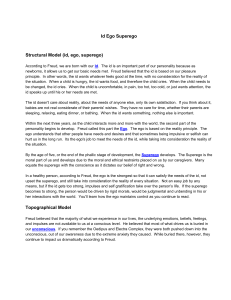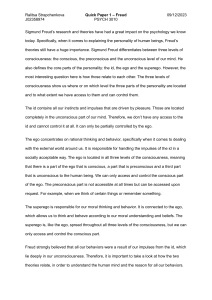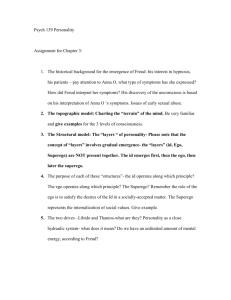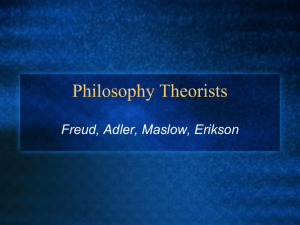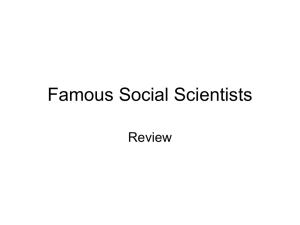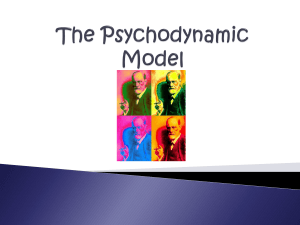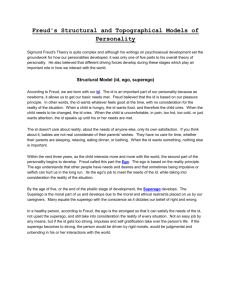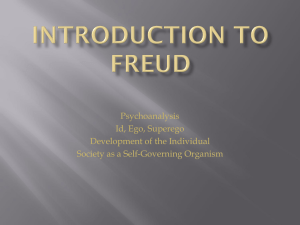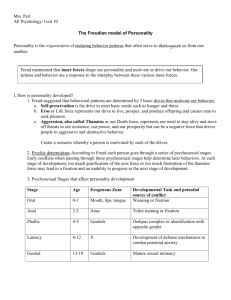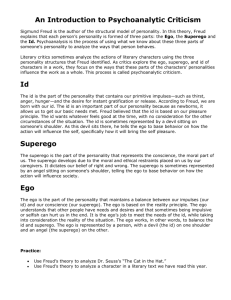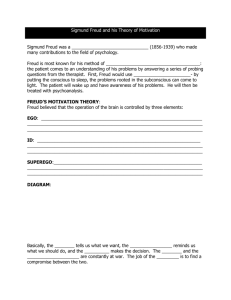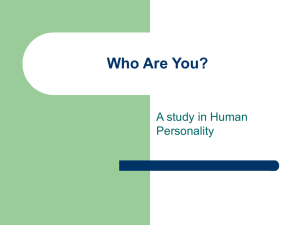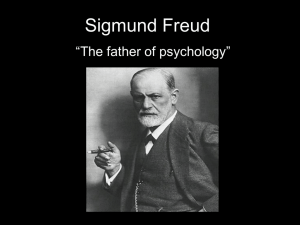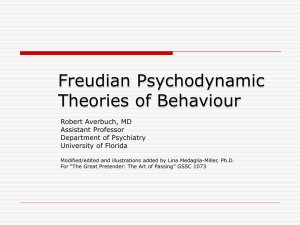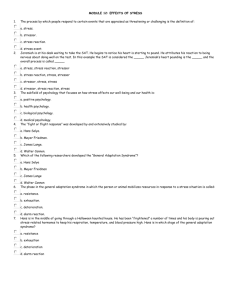Freud Id, Ego, Super Ego
advertisement
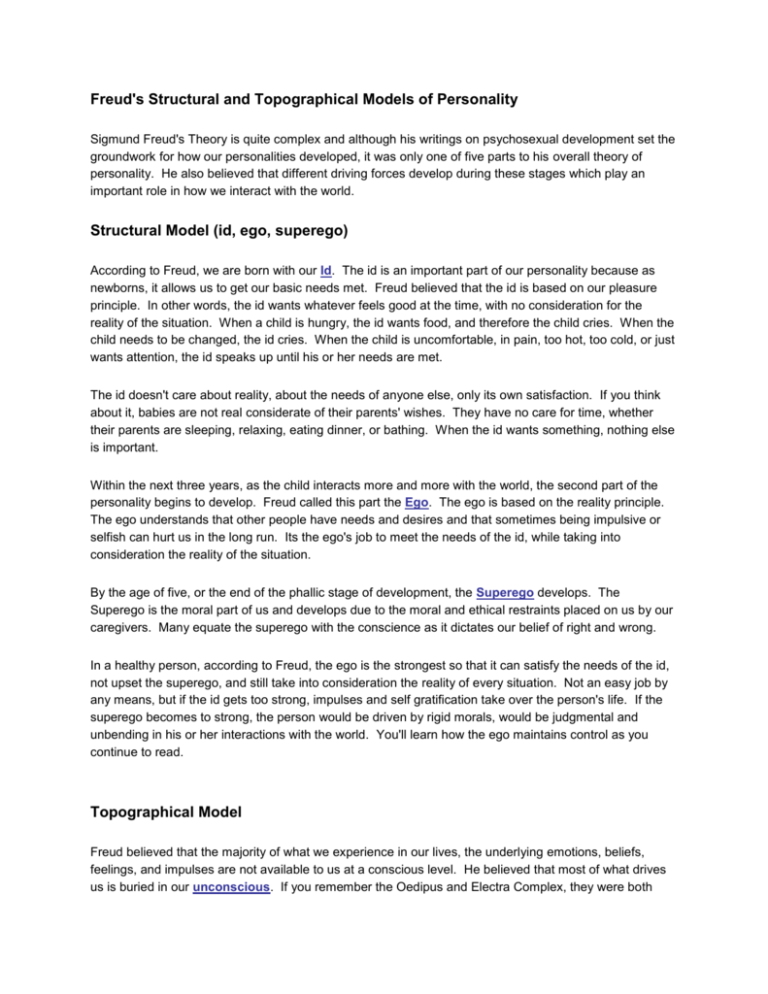
Freud's Structural and Topographical Models of Personality Sigmund Freud's Theory is quite complex and although his writings on psychosexual development set the groundwork for how our personalities developed, it was only one of five parts to his overall theory of personality. He also believed that different driving forces develop during these stages which play an important role in how we interact with the world. Structural Model (id, ego, superego) According to Freud, we are born with our Id. The id is an important part of our personality because as newborns, it allows us to get our basic needs met. Freud believed that the id is based on our pleasure principle. In other words, the id wants whatever feels good at the time, with no consideration for the reality of the situation. When a child is hungry, the id wants food, and therefore the child cries. When the child needs to be changed, the id cries. When the child is uncomfortable, in pain, too hot, too cold, or just wants attention, the id speaks up until his or her needs are met. The id doesn't care about reality, about the needs of anyone else, only its own satisfaction. If you think about it, babies are not real considerate of their parents' wishes. They have no care for time, whether their parents are sleeping, relaxing, eating dinner, or bathing. When the id wants something, nothing else is important. Within the next three years, as the child interacts more and more with the world, the second part of the personality begins to develop. Freud called this part the Ego. The ego is based on the reality principle. The ego understands that other people have needs and desires and that sometimes being impulsive or selfish can hurt us in the long run. Its the ego's job to meet the needs of the id, while taking into consideration the reality of the situation. By the age of five, or the end of the phallic stage of development, the Superego develops. The Superego is the moral part of us and develops due to the moral and ethical restraints placed on us by our caregivers. Many equate the superego with the conscience as it dictates our belief of right and wrong. In a healthy person, according to Freud, the ego is the strongest so that it can satisfy the needs of the id, not upset the superego, and still take into consideration the reality of every situation. Not an easy job by any means, but if the id gets too strong, impulses and self gratification take over the person's life. If the superego becomes to strong, the person would be driven by rigid morals, would be judgmental and unbending in his or her interactions with the world. You'll learn how the ego maintains control as you continue to read. Topographical Model Freud believed that the majority of what we experience in our lives, the underlying emotions, beliefs, feelings, and impulses are not available to us at a conscious level. He believed that most of what drives us is buried in our unconscious. If you remember the Oedipus and Electra Complex, they were both pushed down into the unconscious, out of our awareness due to the extreme anxiety they caused. While buried there, however, they continue to impact us dramatically according to Freud. The role of the unconscious is only one part of the model. Freud also believed that everything we are aware of is stored in our conscious. Our conscious makes up a very small part of who we are. In other words, at any given time, we are only aware of a very small part of what makes up our personality; most of what we are is buried and inaccessible. The final part is the preconscious or subconscious. This is the part of us that we can access if prompted, but is not in our active conscious. Its right below the surface, but still buried somewhat unless we search for it. Information such as our telephone number, some childhood memories, or the name of your best childhood friend is stored in the preconscious. Because the unconscious is so large, and because we are only aware of the very small conscious at any given time, this theory has been likened to an iceberg, where the vast majority is buried beneath the water's surface. The water, by the way, would represent everything that we are not aware of, have not experienced, and that has not been integrated into our personalities, referred to as the nonconscious.
